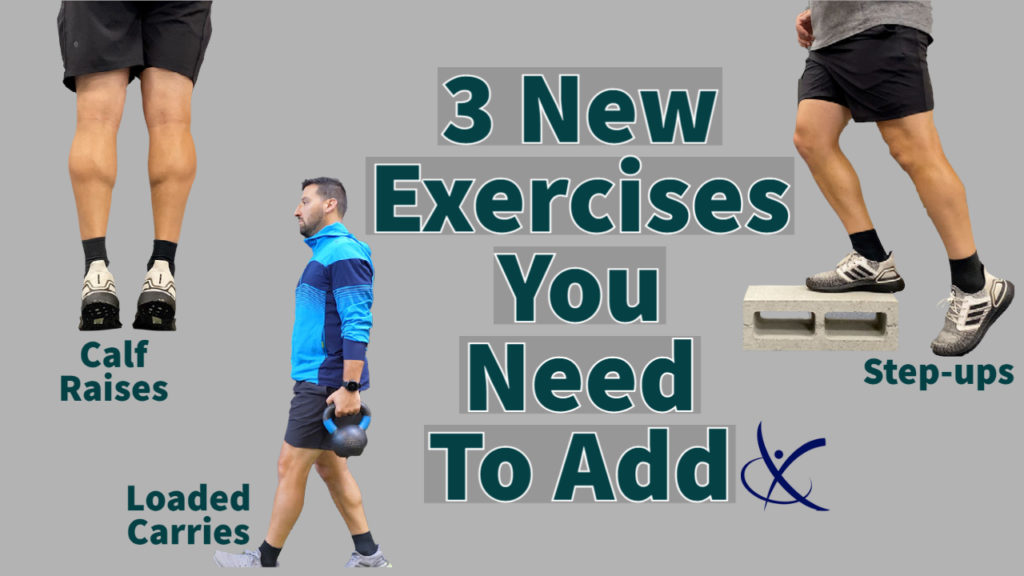Exercises You Should Be Doing: Part 2
Up next in our list of must-do exercises are the loaded carry/march, the step up, and the calf raise. You’re certainly going to want to take notes here and by now, you’re already familiar with our stance on essential exercises. We like to encourage clients to work smarter, not harder. And our list of exercises that should be in everyone’s rotation includes movements that have a lot of return on investment. Piggybacking off of my last post, here is the breakdown for the next three movements you should familiarize yourself with, and then master.
The Loaded Carry
The loaded carry or march will target strength and stability for the entire body, especially the axial skeleton. You know this as the spine. Gravity is always pushing down on our bodies, compressing our spine from top to bottom like a soda can right before it’s crushed. Learning to stabilize your spine against this force is an excellent way to get stronger. Holding additional weights in your hands (either both or one) increases the external load/force and will help you get stronger. As an added bonus, this exercise also challenges the hips and legs into single-leg positions.
- Start with one weight in each hand: this is a “Farmer Carry”
- You can progress to weight in one hand only which is a “suitcase Carry
- A single weight in a “Goblet” hold is a “Goblet Carry/March”
- Your goal should be to work up to carrying 50-100% of your body weight for 30-60 seconds 2-3x
The Step Up
Raise your hand if you have to go up or down stairs? The Step Up exercise is a PT favorite as it has massive returns for strengthening your leg. Unfortunately, this exercise also gets botched like no other. When performed correctly, the step-up will improve your leg strength, namely those muscles around your knee, and improve overall daily function. Start with one foot up on a step or platform. Instead of simply stepping up, pause for a split second before your bottom foot comes off of the ground completely. This pause will ensure you’re not pushing off with the toes of your bottom foot during a significant portion of the movement. You can then focus on using your foot/leg that is elevated to perform the movement correctly.
The knee is the largest joint in the body and improving the strength of the muscles around it will have profound impacts on your movement, and overall health.
- 3-5 sets of 8-12 reps can be a good place to start
- Aim for slow controlled movement before adding weight
- an additional 20% of body weight is a good goal to work towards
The Calf Raise
As we age, muscles will atrophy, and the muscle fibers undergo changes. The calf muscle complex is one of the muscle groups that undergoes significant changes the earliest. Weakness in this muscle group can result in poor mobility, decreased power, and overall loss of function. If you’ve ever witnessed an older individual walk there can be an element of small, slow, and shuffling steps seen. Because of its significant role during walking, calf strength can be a game-changer for many adults. At the very least, it should be included in our list of “must-do” movements for obvious reasons.
- Double leg from the floor
- Single leg from the floor
- Double leg off of a block or step
- Single leg variation off a block
- Aim for 15-20+ reps with slow control
This is a simple list of exercise progressions for the calf complex. Focus on working up towards single leg variations with an additional 10-20% of body weight.
As always, these lists are not comprehensive. They serve to give you a lens into our world and where we spend our time with resistance training. Most everyone will benefit from some form of strength training on their own, but it is not always obvious where the efforts should lay. Unpacking a few at a time is a good place to start and we hope you can implement them for your own routines. As always, reach out with any questions.
Happy Training!
